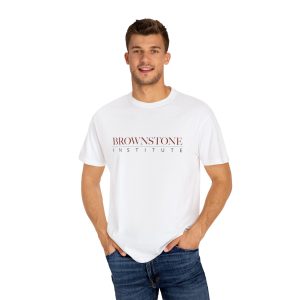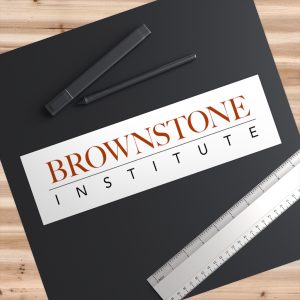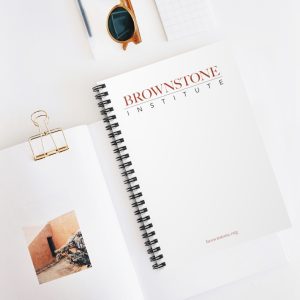The Covid crisis has illuminated a number of aspects of human nature—both what you might call our “darker” tendencies, including scapegoating, polarising, dehumanising others and groupthink; and what you might call our more noble qualities, including empathy, kindness, compassion, companionship and courage.
As a psychologist with a long-time interest in trauma and extreme states, I’ve been following this unfolding crisis with a very unsettling combination of awe and horror, inspiration and disappointment. I think of the Chinese symbol for “crisis” being a combination of the symbols for “danger” and “opportunity,” and I’ve been considering that we are finding ourselves metaphorically hurtling down the road, rapidly approaching a fork. One path takes us to rapidly escalating danger and hardship; and the other path takes us into the possibility of a more healthy, just and sustainable society. Which path will we choose?
I’d like to invite you to join me on a little journey, an exploration of the Covid crisis through a lens crafted by an emphasis on human needs and our recent understandings of trauma. As preparation, let’s first take a few moments to define a few concepts that will act as our compass on this journey:
Human needs: The universal “nutrients” that all human beings require to survive and thrive. These relate to our physical, mental, social, spiritual and environmental domains.
Feelings/emotions: Our inner “messengers” (consisting of physical sensations and impulses) that alert us to needs met or unmet, and motivate us to continue meeting our needs the best that we can.
Actions/strategies: Every action that we take—and I mean every action, great or small, consciously or unconsciously—is an attempt to meet needs.
Power is one’s capacity to gather resources to meet needs. Implicit in this definition is that in order to meet needs, we need to (a) be able to gather relatively accurate information, and (b) have enough freedom and sovereignty to be able to carry out actions that will effectively meet our needs.
A traumatic event is any event that we experience as threatening (causes harm to ourselves or loved ones in some way— or in other words, undermines our needs), while at the same time we do not have sufficient power to protect ourselves. Obvious examples of this are being physically or sexually abused/assaulted, and being involved in a threatening/harmful accident or disaster (whether caused naturally or intentionally by others).
Violence: The act of carrying out a traumatic event against someone—i.e., threatening or inflicting harm on someone who is relatively powerless to sufficiently protect themselves in the situation. The one perpetrating violence may or may not be aware that they are doing so.
Threat response: Our hard-wired response to a traumatic event, which follows the hierarchy of fight–>flight–>freeze/collapse, depending on the intensity of perceived threat and our power to manage it. If we feel relatively confident in our capacity to manage the threat, we naturally first shift into ‘fight’; and as our experience of powerlessness in the face of the threat increases, we move along the response continuum—from fight to flight to freeze/collapse/shutdown/submit.
There is another response, fawning, which can show up in a couple of different parts of this continuum. This is the instinct to strongly attach to others. It could occur as part of ‘fight,’ where we seek allies against the perceived perpetrator of the threat (‘the enemy of my enemy is my friend,’), or it could occur as part of ‘collapse,’ where we instinctively form an emotional bond directly with the perpetrator in a desperate attempt to survive (sometimes referred to as the Stockholm Syndrome).
Post Traumatic Stress: Our natural state when we are not in a threat response is to feel relatively calm, peaceful, clear-headed, compassionate, empathetic, joyful and socially engaged. But when we experience a particularly severe or chronic traumatic event, then we can become stuck in a chronic threat response, even after the threat has passed. This is generally referred to as an acute stress reaction when relatively short-lived, or as posttraumatic stress disorder when it becomes a longer-term condition.
As a result, mind/body states of anger/rage (fight), anxiety/fear/panic (flight), or despair/hopelessness/helplessness/dissociation (collapse) predominate, and we may bounce back and forth between these. Life loses its shine; we lose our peace of mind; we find it difficult to engage socially and empathise with others; we polarise (‘Us vs Them’), scapegoat (‘find the bad guy’), and become paranoid (the chronic experience of a threat that we just can’t shake); and we find it difficult to think clearly, developing tunnel-vision, becoming increasingly rigid and dogmatic in our thinking, and losing our capacity for open-minded and critical thinking.
Okay, now that we have our ‘compass’ of definitions ready, let’s turn our attention to the Covid vaccine mandate crisis. We’re going to focus in particular on how this crisis is presently unfolding in New Zealand, since this is where I live, but I understand that there are many similarities between what’s happening here and other parts of the world at the moment.
In early 2020, a frightening narrative emerged of a novel coronavirus that appeared to be much more harmful than a typical flu, with significantly larger rates of death, disability and transmission, and for which we had no known treatment. In other words, the world faced the prospect of a serious threat combined with powerlessness—i.e., a global traumatic event.
Very large numbers of the human population developed a threat response, which quickly spread around the world with a degree of contagion that was possibly even greater than the virus itself. And given what we understand about the human threat response (as defined above), what unfolded was not particularly surprising. Collectively, we witnessed runaway polarisation (‘us vs. them,’); scapegoating (‘find the bad guy’); dehumanising and a general loss of empathy for anyone identified as ‘other’; a breakdown in our capacity for critical thinking and sensemaking; and an increase in our tendency to succumb to groupthink (blindly following the consensus of our identified group with little critical thinking).
Also in line with our understanding of the human trauma response, we found feelings of anger/rage, anxiety/fear/panic, and despair/helplessness/hopelessness (fight, flight, and collapse feelings) also spiraling out of control. It’s worth reiterating here that when we are not dominated by a threat response, we naturally feel relatively peaceful, clear-headed, empathetic and compassionate towards others.
According to our understanding of human evolution, our threat response made perfect sense in our original homeland—the plains of Africa. When a predator or a hostile tribe attacked us, we needed instincts that would set aside complex rational thought and make a relatively simple assessment very quickly—Do we fight? Do we take flight? Or do we collapse and feign death? Then if we survived the situation, we could come out of the threat response, and reengage with the members of our tribe and devote more of our time and energy to critical thinking and dealing with more complex problems. Ideally, we spent the lion’s share of our time in this relatively, calm, clear and socially engaged state, with only rare fleeting moments in which we were hijacked by our automatic (autonomic) threat response.
And when dealing with a more sustained threat, such as a hostile tribe or a large pride of lions in the vicinity, then it made sense during those periods of time to develop more cohesion and unity within our tribe, with less autonomous and diverse perspectives and behaviours—in other words, to shift to a state more dominated by groupthink and vilifying/polarising of the threatening ‘other.’
This kind of threat response makes a lot of sense……when you’re a hunter and gatherer tribe living in the plains of Africa. But not so much when you’re a member of contemporary human society, with far more dense populations and diverse cultures and perspectives all striving to live together harmoniously.
So how does this hunter-gatherer threat response system manifest today? And particularly within the context of the Covid crisis? We see polarisation occurring on many levels, between many members of the public and their respective governments, between different political factions, different ethnicities and cultures, different classes, even between friends and family members. As different groups or entities became identified by other groups as ‘the main source of the problem,’ different groups began to polarise around different belief systems and their associated ‘big questions’—Who or what caused the virus/pandemic? What is the best way to treat the illness? Does the virus/pandemic even exist? Is it really as bad as they tell us? Is it all just a big plan to further empower the rich and powerful?…etc…
Then when the vaccines came to market, the mistrust that many had already been feeling towards members and entities of the upper echelons of society came into full bloom. For anyone paying close attention to the behaviours of those ‘on top,’ it’s very easy to understand where this mistrust had come from. For those paying attention to the news, we find an ever-flowing stream of evidence that those in power are abusing that power to further enrich/empower themselves at the cost of everyone else. We’ve been witnessing those at the top perpetrating an increase in social inequality and the erosion of human rights at what appears to be an exponential rate, along with a steady increase in misinformation campaigns, dishonesty, fraud, violence, and the hijacking or outright destruction of democratic institutions.
The pharmaceutical industry has been particularly infamous in this regard, where it is no secret that the regular commitment of fraud has simply become its modus operandi, and the fines paid out for said fraud (generally costing much less than the profit generated) have become just one more cost of doing business.
Fast forward to the present day (again, I’m going to be concentrating on the events in New Zealand, but I’m sure that many around the world will resonate with this picture). Being an island country, since the end of the first outbreak in mid-2020 and up until the middle of 2021, it has been possible to prevent the spread of Covid. Strict border controls, lockdowns, etc., appear to have significantly aided with this. The fear of catching Covid was relatively minimal for most kiwis during this time, and society functioned relatively harmoniously with generally less disruptions than what was being witnessed in other parts of the world.
However, the relatively frequent lockdowns were beginning to evoke new fears in many people—the fear of businesses collapsing, of the loss of employment and impoverishment, of the loss of freedom, of meaning, of social connection and fun… For some, these losses were well worth the sense of security obtained by holding off the spread of Covid, and they experienced very little threat response. For others, these were experienced as significant threats to various degrees, and many began to experience a substantial threat response. But in general, the situation was tolerable for the majority of us.
Then came the ‘vaccine rollout.’ Initially, the government and associated media and organisations (which I’ll simply refer to collectively as ‘the government’ from here on) strongly encouraged the vaccine but did not mandate it for anyone. For those whose fear of the virus exceeded their fear of the vaccine, and who generally trusted the government and the pharmaceutical industry, the choice was relatively easy—get vaccinated! And for those who were already mistrustful of the government and/or Big Pharma, and/or who had decided to gather some information outside the narrow confines of the government-sanctioned sources, the heavy promotion of the vaccines and the loud claims of them being ‘safe and effective’ (despite readily available data to the contrary) generally increased their unease and associated threat response. But because these individuals were still in choice (still had substantial personal power) about whether or not to vaccinate, the threat response for most in this camp remained at a relatively low level.
At this point, the government began to really push on the throttle of fear to ‘encourage’ people to get vaccinated. The volume and over-simplification of their message intensified: “The virus is extremely dangerous; the vaccines are extremely safe and effective; if we all get vaccinated, then the pandemic will end and we will be able to end the lockdowns and get ‘back to normal’; and those choosing not to take the vaccination (the ‘anti-vaxxers’) are (a) ignorant and misinformed, (b) dangerous menaces to society, risking the health of everyone else, and (c) extremely selfish individuals who don’t care that they’re causing so much harm to the community.”
So let’s hit the pause button for a moment and consider the government’s approach from the perspective of what we understand about trauma and the threat response. How do we imagine it would have impacted New Zealand’s society?
- It clearly ramped up a sense of fear in society, affecting nearly everyone to various degrees across the political spectrum. For those who generally trust the government and its assorted allies, fear of the virus increased substantially, along with fear of ‘the unvaxxed.’ For those who generally don’t trust the relevant institutions and associated mouthpieces, and who have formed alternative narratives, their fear and mistrust of the government, their fear of the vaccine, and their fear of losing personal empowerment and freedom of choice increased substantially.
- Along with this increased fear came increased polarisation. All of those who feared the virus more than the vaccine and government formed increasing alliances; and all of those who feared the government, the loss of human rights, and/or the vaccine more than the virus also formed increasing alliances. And these two ‘camps’ increasingly turned their fears and animosities against each other—‘Us vs Them.’
- Along with the fear and polarisation came scapegoating—seeing the ‘other’ as the source of the threat, the enemy that must somehow be neutralised.
- Empathy and compassion for the ‘other,’ and the capacity to step into the ‘other’s’ shoes and consider alternative perspectives became increasingly difficult. The tendency to attach rigidly and dogmatically to the narrative held by one’s own identified group (i.e., groupthink) also increased.
So what do we find as a result of the government’s particular ‘information and vaccination campaign’? We find that New Zealand society has become a tinderbox of tension, one extremely vulnerable to any spark.
Now let’s hit the play button again and look at the next event—the government decides to make the vaccines mandatory for a large number of professionals, despite earlier indications that it would not do so.
<spark…> BANG!
So regardless of what your particular stance may be on this topic, I want to invite you to set your own perspective on a shelf for a moment and do your best to put yourself in the shoes of the individuals in both of these different camps. (I realise that reducing the situation to just 2 camps is a bit reductionistic, but I think such simplification is useful in making sense of this complex topic).
Let’s begin with those who have wilfully (wilfully, as in doing so in full choice, being the key word) chosen to get vaccinated. Assuming that you have not experienced significant adverse events from the vaccination, you probably feel some reduction in your threat response. The trusted authorities have told you that you have taken something that is very safe and very effective. You can breathe a bit easier with the belief that you’re much less likely to catch Covid (or get less sick if you do catch it) and less likely to transmit it to others. You also feel secure in the belief that since you followed the government’s directives, you’re likely to maintain most of your freedoms and not lose your job. You also may feel a sense of pride in ‘doing the right thing’ for your community.
Additionally, you probably feel increasing resentment and animosity towards ‘the unvaxxed,’ believing that they are generally selfish, and that they are the reason the lockdowns continue, which continue to hurt the economy, reduce your freedoms, and pose an ongoing risk to the vaccinated.
Now let’s turn to those who have chosen not to take the vaccine (the Pfizer mRNA vaccine is the only one available in New Zealand at the moment) who work in one of the mandated professions. Most likely, you have done a fair bit of your own research outside the confines of the government-approved media and institutions, which means you have likely come across compelling evidence that the vaccine is actually not ‘very safe’ nor ‘very effective.’
Given the constant bombardment by the government and associated media of messages to the contrary, your trust in these institutions has continued to erode to the point where you have very little trust left, if any. And now the government is forcing you to make a choice: you can either inject this substance into your body that you perceive as being potentially seriously harmful, or you can lose your livelihood. Your choice.
If you are like most people, your livelihood meets many essential needs—security, meaning, worth, contribution, companionship, etc. So you’re faced with a seriously traumatic event—you are being forced by an institution much more powerful than you to choose between one serious threat or another serious threat.
Some choice! Of course, it’s not a real choice. This is the definition of coercion, and even the definition of violence. And because you’re facing a perceived threat combined with powerlessness (which is the definition of a traumatic event), you are likely to experience a trauma response, the intensity of it varying depending upon your particular perception and experience of the relevant threats.
As a practicing psychologist, I work with many survivors of abuse; and I have heard from a number of them that they experience this situation very much like former experiences of sexual or physical abuse—someone who has a power-over relationship with them is essentially saying to them, “Either you let me inject this substance into your body against your will, or I will severely punish you [i.e., take away your livelihood and possibly many other freedoms].”
Sound like an extreme analogy? For many people, this is exactly what it feels like. Fortunately, not everyone experiences this dilemma so acutely, but most people still experience it as a traumatic event to some degree nonetheless.
In addition to the threat of the loss of your livelihood, you also experience a threat to your essential human rights, and a threat to the human rights of nearly everyone in your community more generally. You probably have some awareness of the many slides into totalitarianism that have occurred within human history, and the pattern of the steady erosion of freedoms and human rights that typically precede such descent into tyranny.
You are probably also aware of the more extremes of such cases, in which one section of the population was scapegoated and ostracised or even subjected to massacre and genocide. So now having very little trust in your government, and experiencing a serious violation of the human rights of yourself and others, your fear and associated threat response is likely to grow even further. You find yourself face to face with a very serious and potentially overwhelming traumatic event.
So if you’re someone experiencing such a traumatic event, how do you imagine you would respond? First, you’re likely to fight, to form allies with others in the same boat, to do your best to harness power and resources and fend off the threat (i.e., find a way to maintain your livelihood without having to violate the sovereignty of your body with a potentially harmful substance).
When it appears that you may not win the fight, you may fight back even harder. Like an animal pinned in a corner, you may feel compelled to resort to violence in some way. If the fight fails, you may try to ‘flight,’ run to some other country that would not force you to face the same threat, but this is not a viable option for many New Zealanders (or many others around the world).
So what’s next? Submit/collapse. And we know all too well where this takes us—into despair, shame, hopelessness, helplessness, numbness, dissociation. Succumbing to a submit/collapse response has terrible implications for one’s mental health and general wellbeing—this takes one down the slippery slope of substance abuse and addiction, domestic violence and child abuse, criminality, depression, anxiety disorders, psychosis and suicidality.
There are many shades of grey between the two extremes that I have portrayed here—for example, there are those who have chosen to get vaccinated but who still strongly support people’s freedom to choose; and those who are ‘vaccine hesitant’ but who have submitted to the jab under some degree of coercion, but who are still generally not overly concerned about its harms and/or the abandonment of the right to informed consent. But in order to consider a way to move forward to repair this rupture that has occurred at a very fundamental level in this society, It is helpful to consider the groups of people who are the most entangled within these opposing threat responses. And now having put our shoes in those holding the more extreme positions in this social rupture, let’s see if we can summarise the overall impact of the New Zealand Government’s choice to enact these mandates, looking at it through a trauma-informed lens:
For those who trust the narrative of the government and associated institutions, and therefore have much faith in the vaccine and much fear of the virus, you will likely feel some relief that most of the population is getting vaccinated, believing that the threat of the virus will go away, and that the lockdowns will finally end. You believe that your needs for safety and financial security will likely be well met. However, as you witness the increasing pushback (i.e., threat response) against the vaccination by ‘the anti-vaxxers,’ you find that your threat response to that group is most likely increasing, and you increasingly perceive them to be the primary source of threat to your own wellbeing.
For those who resist the vaccination mandates, you will likely experience your threat response rapidly escalating, along with associated feelings of anger and fear, particularly towards the government, but also to the many people (the majority?) who support the government’s mandates (‘the anti-choicers’). For many of you, you feel like this is not just a fight to save your health, the sovereignty of your body, your livelihood and your personal freedom, but also a fight to save the human rights and soul of your community and country.
So what we have here, as a direct result of the government’s strategy to deal with the Covid crisis (the promise of a safe and effective vaccine, the vilifying of those choosing not to get vaccinated, and the abandonment of the principle of informed consent, and the use of escalating coercion) is a very painful and dangerous situation.
New Zealanders find themselves caught within a vicious dynamic—two heavily polarised threat responses, with each group seeing the ‘other’ as a selfish and threatening enemy that must somehow be neutralised, and with many members on each side feeling as though they are in a fight for their life.
Furthermore, it’s beginning to look as though the government’s strategy to vaccinate as many people as possible may be beginning to backfire—that they may have unwittingly reinforced the opposition to the vaccine. Yes, a number of ‘vaccine hesitant’ people will submit to the coercion. But as discussed, people naturally shift into a fight response when they first feel threatened. Many of those who may have been on the fence are likely to now feel strongly opposed to the coercion; and many of those who have already had a jab or two may find themselves being concerned that they may be required to go on to have endless “boosters,” with the possibility of adverse events increasing each time, or fear for the implications of the loss of essential human rights that they are witnessing, and join in with the fight against the mandates.
In short, it is becoming clearer every day that the government’s strategy to impose mandates has been a tragic failure. Not only is it unlikely to force the vaccination rates up to the desired 97%, but it is already creating a serious rupture within the very fabric of New Zealand society, one that is at risk of causing far more harm than the virus.
And this is only the beginning.
If we remain on this track, the signs are emerging that many of our essential services will face some degree of collapse. Many health professionals, teachers and front-line workers (those under the current mandates) are preparing to walk off the job. Many of these services are already stretched very thin, and even a relatively small percentage of walkouts is likely to have a seriously detrimental effect on these systems.
So if the government’s approach to this crisis is such a failure, then what’s the alternative? Well, since what has been created by their behaviour is a polarised threat response pervasive within society—‘us vs them,’ ‘enemy vs enemy,’ ‘a fight for our lives against each other’—then what is required to repair this rupture is to find a way to support everyone(or as many people as possible) to feel safe and connected again. To defuse the perception of threat for everyone, at least as much as possible. To promote dialogue and empathy for each other. To honour everyone’s needs. For the government to shift from a ‘power-over’ position to a ‘power-with’ position.
And how do we do this? I would say it’s relatively simple, but not necessarily easy. We need to find a way to put everyone’s needs on the table, and then develop strategies that will meet as many of them as possible. And the needs that have to come first are safety, personal choice and empowerment, and connection/empathy. These are the most essential needs to be addressed when we support anyone through a trauma response and back to one’s natural baseline—what is often referred to in the trauma field as a state of “social engagement” (or to use neurological terminology—a ventral vagus mediated state of the autonomic nervous system).
And what are the particular strategies we can employ to attempt to meet everyone’s needs for safety, personal choice and empowerment, and connection/empathy? In my trauma-informed opinion, I think it is very clear that, first and foremost, we must immediately stop the mandates and again honour the internationally recognised essential human right to informed consent.
Acting in good faith, it would help if those who have been harmed by the mandates or otherwise oppose them give the government and other allied parties the benefit of the doubt–that they have merely been doing their best to protect the population from the virus. But we have to recognise that our understanding of trauma, our understanding of human nature, a reflection on our history, and other serious red flags that have been rapidly emerging, all point to one clear conclusion: these mandates are akin to pointing guns to the heads of many thousands of people in our society, and the natural response to that is not pretty. The so-called cure may ultimately be far more harmful than the virus.
Secondly, we need to step back from a centralized ‘power-over’ strategy and turn to collective ‘power-with’ solutions. This means supporting dialogue and mediation on many different levels—between employers and employees; between those who choose to vaccinate and those who don’t; and between those with different ideas and perspectives around treatment and management of the virus.
As someone with extensive experience in the fields of mediation, trauma therapy, and psychology more generally, and who has had extensive contact with many colleagues in these fields, I can say that there are plenty of us who would be more than happy to support this endeavor. Instead of an army of ‘vaccine enforcers,’ how about an army of mediators and dialogue facilitators.
Third, we need to provide support to those who have already experienced significant harm from this crisis, with this harm presently escalating dramatically every day. And I’m not talking about the harm done by the virus. Yes, of course, these individuals need all the support we can give them, but they represent a far smaller number than those who have experienced harm caused directly by the government’s ‘information campaign’ and mandates. This includes the various ruptures of trust within the fabric of our society, as discussed above, as well as the harm to those who have been traumatised by the threat to their livelihoods and other freedoms, and to those who have experienced, or whose loved ones have experienced, physical harm caused by the injections themselves while being ignored or sidelined.
Concerted effort toward skillful dialogue and mediation, as discussed above, is likely to be a particularly effective strategy for mitigating the general ruptures in trust. However, in addition to this, we also really need a formal repair and reconciliation process coming from the entities who have been the most responsible for this harm—the New Zealand Government and other governing bodies.
This would entail a formal public acknowledgment by these institutions that the situation is complex—that the vaccines are not really ‘very safe’ and ‘very effective,’ (as clearly evidenced by the CDC’s VAERS system, the large numbers of ‘breakthrough cases’ around the world, and other highly credible sources), that we really do not have any long term data on the effects of these vaccines and there really are some worrying indications in this regard, and that the concerns of the ‘vaccine hesitant’ are actually legitimate and understandable.
Such repair and reconciliation would also ideally include an explicit acknowledgment of and responsibility for the harm done to those who have chosen not to get vaccinated—the harm and humiliation caused by generally scapegoating and vilifying them, invalidating their perspectives, and threatening to take away their livelihoods. This would go a long way to repairing this social rupture and re-establishing trust in our democratic institutions. And along with this needs to be a serious commitment to ongoing transparency by our democratically elected leaders and institutions, and a willingness by them to openly discuss the complexity of the situation and to incorporate new research into dialogue and policy as it emerges.
So as we come to the end of this journey through the Covid crisis as seen through a trauma-informed and needs-based perspective of the situation, I would like to invite you to contemplate a quote by Martin Luther King, Jr., and consider how his words of wisdom may support us all in finding a way through these dark times and towards a healthy, compassionate, just and sustainable society:
“The ultimate weakness of violence is that it is a descending spiral, begetting the very thing it seeks to destroy. Instead of diminishing evil, it multiplies it…Returning violence for violence multiplies violence, adding deeper darkness to a night already devoid of stars. Darkness cannot drive out darkness; only light can do that. Hate cannot drive out hate; only love can do that.” ― Martin Luther King, Jr.
Join the conversation:


Published under a Creative Commons Attribution 4.0 International License
For reprints, please set the canonical link back to the original Brownstone Institute Article and Author.









